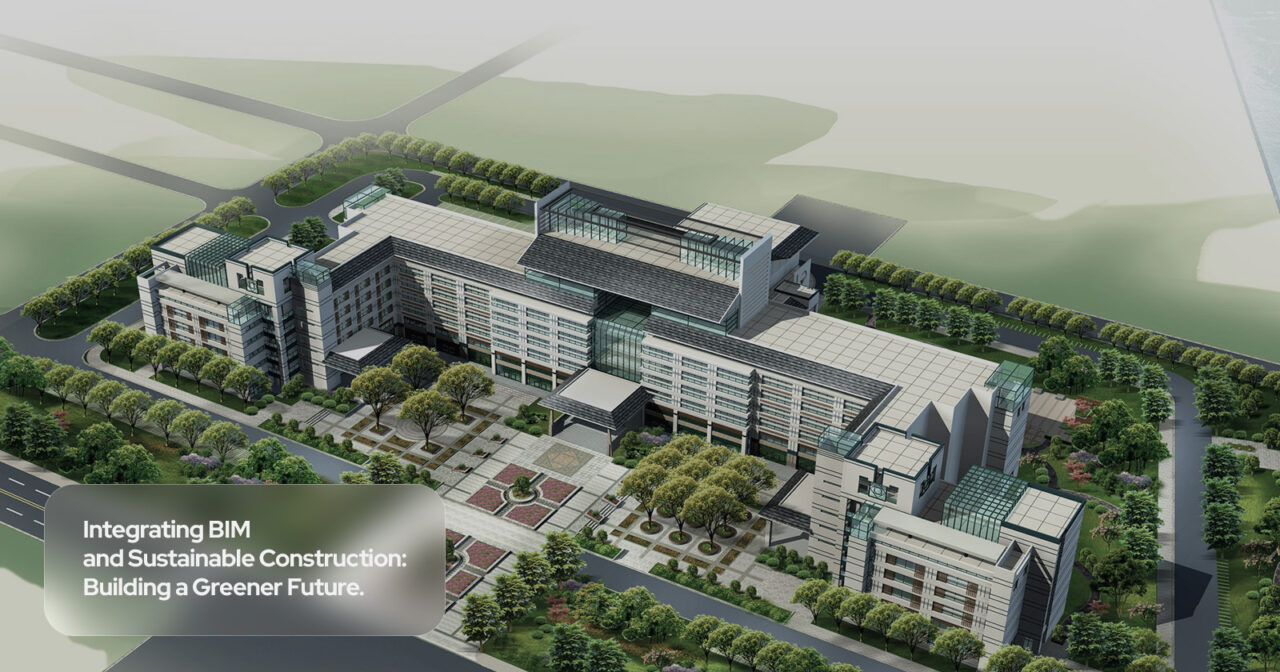
Introduction
According to a report commissioned by the International Energy Agency, the Tracking Buildings 2023 study revealed that buildings account for a significant 37% of global energy and carbon emissions. Notably, 10% of this total is attributed solely to the production of construction materials.
“The integration of BIM and sustainable construction is not only a trend but also a fundamental approach to addressing environmental challenges and achieving energy efficiency goals in the construction industry.” – Carola Bretz, Architect.
This article will explore the integration of BIM and sustainable construction, highlighting the benefits and practical applications of this methodology.
Building a Sustainable Future with BIM
Sustainable construction focuses on resource efficiency, waste reduction, the use of sustainable materials, and optimizing energy efficiency throughout the building’s lifecycle.
By integrating BIM into sustainable construction practices, professionals can make more informed decisions and work towards creating environmentally friendly and economically viable built environments.
“What we build today, will shape our tomorrow. Embrace sustainability for a resilient and harmonious future. Green building is not just a trend; it’s an ethical responsibility we owe to our planet and future generations.” – Fabrizio P., Architect.
Energy buildings: Safer and greener
One of the key advantages of BIM integration is the ability to perform energy performance analysis.
By combining energy simulation tools with BIM models, professionals can evaluate and optimize energy efficiency during the design phase. This allows for the identification of opportunities to improve performance and reduce energy consumption. For example, the orientation of the building and the selection of materials can be optimized to enhance energy efficiency.
Lifecycle assessments are another important aspect of sustainable construction projects that can be facilitated by BIM integration. BIM enables the evaluation of a building’s environmental impact throughout its entire lifecycle, from design and construction technology to maintenance and eventual demolition.
This holistic approach allows specialists to make more informed decisions about materials, construction methods, and asset management strategies, ultimately reducing the overall environmental footprint of the building.
In addition to energy performance and lifecycle assessments, BIM integration also supports sustainable construction practices such as waste management and recycling.
Professionals in the field can identify recyclable materials and reduce waste, promoting more sustainable construction projects.
Furthermore, BIM can be used for sustainable maintenance, allowing owners to implement practices that ensure buildings operate efficiently and maintain sustainable performance over time.
Practical Applications and Case Studies
The integration of BIM and sustainable construction technology has been successfully applied in various projects around the world. For example, the LEED (Leadership in Energy and Environmental Design) certification is a widely recognized sustainability certification that can be achieved through the implementation of BIM practices.
By utilizing BIM, professionals can gather the necessary real-time data and optimize designs to meet LEED requirements.
Another practical application of BIM in sustainable green construction technology is the optimization of design decisions. The ability to simulate and visualize different design scenarios allows teams to make informed decisions that improve efficiency and sustainability.
Factors such as building orientation and the integration of renewable energy systems can be analyzed and optimized using BIM, leading to more sustainable and energy-efficient designs.
“Green buildings are not just bricks and mortar. They are the living, breathing entities that define our commitment to a sustainable future. Sustainability is no longer about doing less harm. It’s about doing more good.” – Fabrizio P., Architect.
Get ready for a green future
In the pursuit of a sustainable future, the focus on zero-carbon-ready buildings has become more critical than ever. As we step into 2024, the global conversation around sustainable development and combating climate change centers on transforming the built environment.
The International Energy Agency has started to study and develop a Pahtway for Zero-Carbon-Ready Buildings, aiming towards 2030.
In essence, the synergy between BIM and energy efficiency in 2023 propels us toward the realization of zero-carbon-ready buildings. It not only streamlines processes but also ensures that sustainability is ingrained in every facet of a building’s existence, guiding us toward a more energy-efficient and environmentally conscious built environment.
The role of BIM in shaping the future
BIM extends its benefits beyond the sustainable design and preconstruction phases, influencing every aspect of the project lifecycle. Notably, the efficiencies introduced by BIM contribute significantly to reducing a building’s overall environmental impact throughout its entire lifecycle.
Here are four key illustrations of how BIM achieves this:
- Transparency for Waste Reduction: BIM brings transparency to the design phase, employing advanced analysis to predict a building’s operational performance before construction commences. This foresight empowers designers to enhance the building’s efficiency from the outset, integrating energy-saving measures at every lifecycle stage, thereby minimizing waste.
- Early Identification of Errors and Risks: Through processes like clash tests, BIM detects potential interferences between different building components, such as plumbing and walls, during the modeling phase. Identifying clashes early not only saves materials but also reduces time and costs, fostering safer construction environments.
- Enhanced Accuracy in Manufacturing: BIM enables manufacturers to create more accurate components off-site, promoting a culture of ‘right first time’ throughout the project. This precision minimizes material waste and consumption, prevents over-ordering, and preserves natural resources that would otherwise be expended in duplicate processes.
- Greater Building Control in Operational Phases: Post-project completion, 3D models are easily shared to optimize the building’s operational energy efficiency. BIM facilitates comprehensive planning and synchronization of major repairs and replacement programs, minimizing disruption and environmental impact during crucial operational processes. Additionally, the concept of a digital twin, a 3D model accurately mirroring the physical project, allows for testing, simulation, and maintenance.
In essence, BIM emerges as a holistic approach, seamlessly integrating sustainability considerations into various phases of a building’s lifecycle, embodying a commitment to efficiency, waste reduction, and environmental responsibility.
Conclusion
The integration of BIM and sustainable green construction technology is a crucial step towards building a greener future.
By leveraging BIM’s capabilities, professionals in the construction industry can optimize energy performance, assess the environmental impact, manage waste, and implement sustainable maintenance practices.


